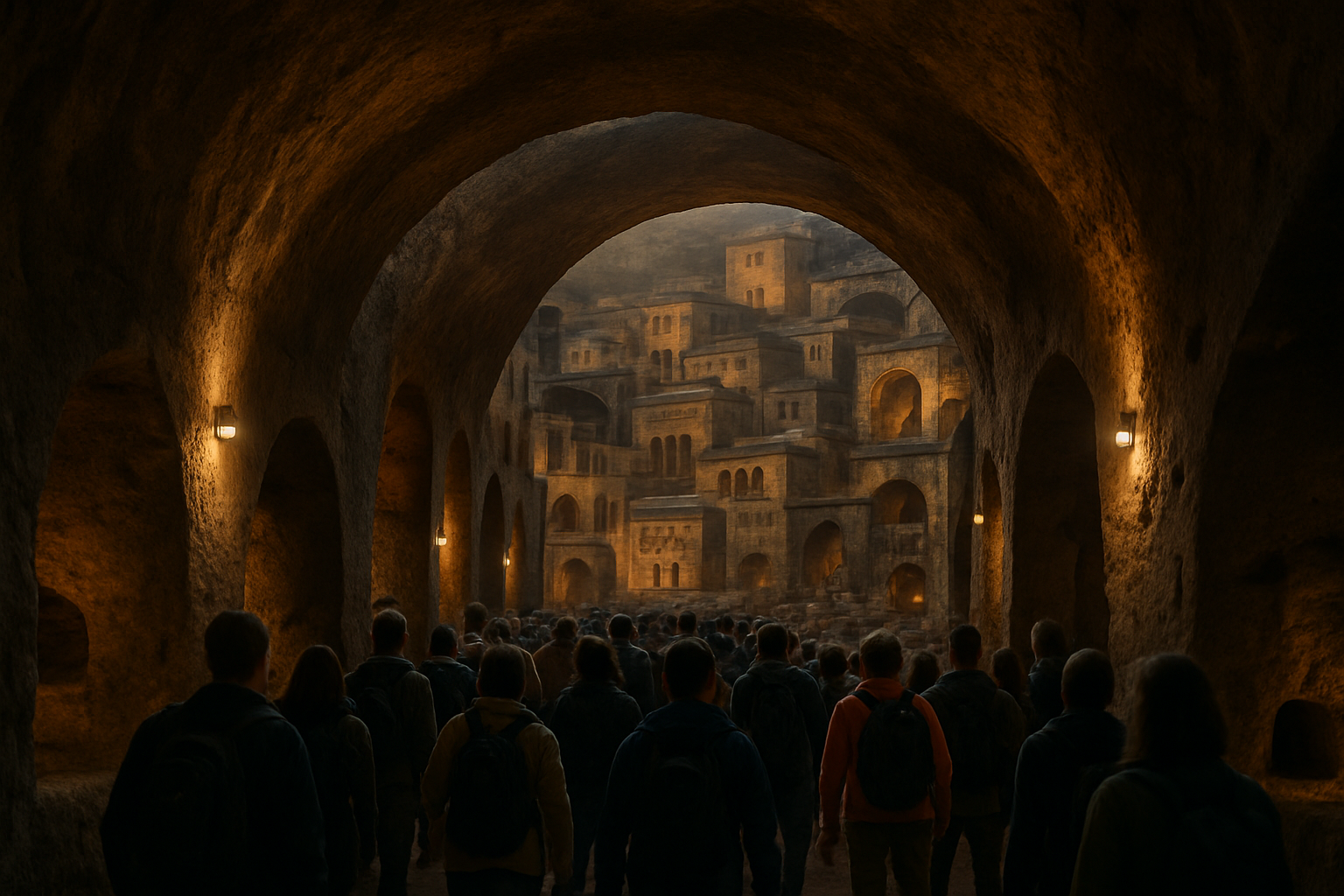Subterranean Sojourns: Exploring the World's Underground Cities
Venture beneath the surface and discover a hidden realm of underground cities, where history, mystery, and architectural marvels converge. These subterranean sanctuaries, often overlooked by traditional travel itineraries, offer a unique perspective on human ingenuity and adaptation. From ancient cave dwellings to modern subterranean metropolises, underground cities present an intriguing alternative to conventional urban exploration, inviting travelers to delve into the depths of cultural heritage and geological wonders.

Cappadocia: A Labyrinth of Ancient Cave Dwellings
Nestled in the heart of Turkey, Cappadocia boasts an extensive network of underground cities carved into the region’s soft volcanic rock. Dating back to the 7th and 8th centuries BCE, these subterranean complexes served as refuge for early Christians fleeing persecution. The most famous of these, Derinkuyu, extends up to 11 levels deep and could accommodate up to 20,000 people. Visitors can explore intricate tunnel systems, ancient living quarters, and communal spaces that showcase the remarkable engineering skills of our ancestors.
Edinburgh’s Underground City: A Time Capsule Beneath the Royal Mile
Beneath the bustling streets of Edinburgh’s Royal Mile lies a hidden world frozen in time. The Edinburgh Vaults, also known as the South Bridge Vaults, consist of a series of chambers formed within the arches of the South Bridge. Originally used as storage spaces and workshops in the 18th century, these vaults later became home to the city’s poorest residents. Today, guided tours offer visitors a chance to explore these eerie underground passages, learning about the area’s dark history and the lives of those who once called these vaults home.
Naours: France’s Underground Refuge
The underground city of Naours, located in northern France, presents a fascinating blend of medieval history and World War I significance. Originally excavated in the Middle Ages as a refuge from invasion, this vast network of tunnels and chambers spans over 3 kilometers and features 300 rooms capable of sheltering up to 3,000 people. During World War I, the site gained renewed importance as a rest area for soldiers, with many leaving their marks in the form of graffiti. Today, visitors can explore this subterranean labyrinth, witnessing both its medieval origins and its role in more recent history.
RÉSO: Montreal’s Underground City of the Future
While many underground cities are relics of the past, Montreal’s RÉSO represents a modern approach to subterranean urban planning. This vast network of interconnected tunnels, shopping centers, and metro stations spans over 32 kilometers, allowing residents and visitors to navigate the city without braving the harsh Canadian winters. RÉSO exemplifies how underground spaces can be integrated into contemporary urban life, offering a climate-controlled environment that houses shops, restaurants, and cultural venues. This innovative approach to city planning provides a unique perspective on the future of urban development and adaptation to extreme weather conditions.
The Challenges and Rewards of Underground Tourism
Exploring underground cities presents both unique challenges and incredible rewards for adventurous travelers. These subterranean spaces often require special considerations for accessibility, air quality, and claustrophobia. However, the payoff is immense, offering unparalleled insights into historical ingenuity, geological wonders, and alternative approaches to urban living. As interest in these hidden realms grows, it’s crucial for travelers and tourism authorities to balance preservation efforts with the desire for exploration, ensuring these underground treasures remain accessible for future generations.
Illuminating the Underground: Essential Tips for Subterranean Explorers
• Always book guided tours for safety and historical context
• Bring a light jacket, as underground temperatures can be cool year-round
• Wear comfortable, non-slip shoes for navigating uneven surfaces
• Respect photography restrictions to preserve sensitive areas
• Consider claustrophobia levels before booking extensive underground tours
• Stay hydrated, as the dry air in some caverns can be dehydrating
• Learn basic cave etiquette to minimize impact on these fragile environments
As we emerge from the depths of these underground marvels, we carry with us a newfound appreciation for human adaptability and the hidden wonders that lie beneath our feet. Underground cities offer more than just a unique travel experience; they provide a tangible connection to our past and a glimpse into potential futures of urban development. By venturing into these subterranean realms, we expand our understanding of human history, architectural innovation, and the endless possibilities that await those willing to look beyond the surface.





